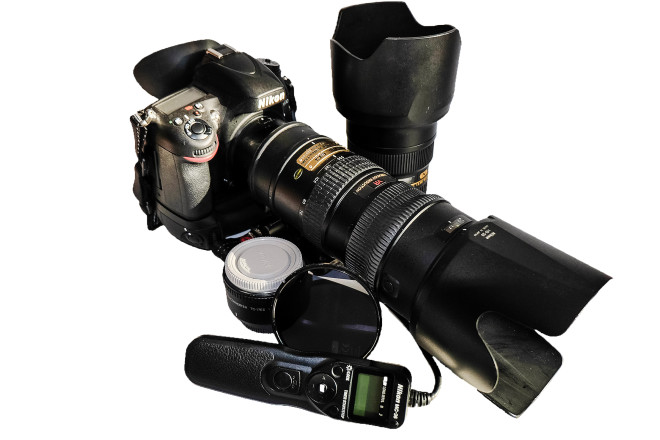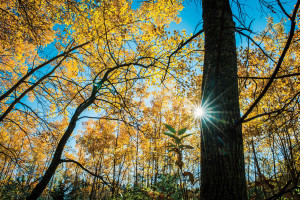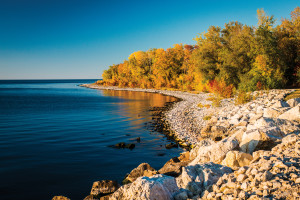Tips for Outdoor Amateur Photography
- Share
- Tweet
- Pin
- Share

Alright! Autumn has finally arrived in Door County. The weather is cooling down. The crowds have gone home and the general pace has slowed down to a relaxing stroll.
For photographers, fall in Door County is paradise. The leaf colors rival, or at times surpass, the famous colors of the East Coast. There is a quality of light in Door County unlike anywhere else I have ever been. It is that quality of light, I believe, that attracts so many talented artists to the area.
If you want to improve the quality of your photos and bring home images that reflect what you experienced and will blow away your family and friends you must learn to see the light.
Study the light every chance you have. Get up early and stay out late and observe how the colors and the landscape’s appearance change throughout the day. You’ve heard of magic hour, the hour just after sunrise and just before sunset, which provides the prettiest light for photography. In summer it can be limited to even less than an hour, which I like to call the Magic 15 Minutes.
Luckily, in the fall the magic times are extended due to the lower angle of the sun, usually providing quality light for three or even four hours after sunrise and before sunset, so literally you can shoot all day.
It’s not necessary to stop shooting once the sun sets below the horizon. Most of my most popular images were shot after the sun had set or just before the sun rose, times when there’s just enough light to take a photo. Bright sunlight can be harsh and heavy on contrast and wash out color and texture. Shooting around noon, especially in summer, is the worst time of day for photography so avoid it whenever possible.
Clouds can help to diffuse the sun and soften harsh shadows so don’t be afraid to shoot on cloudy days or just after a rain. The raindrops can magnify and saturate the colors even more. Wet roads can add reflections to really make your images pop.
When approaching a subject to photograph, check where the sun is and move around your subject for the best angle. Backlighting (shooting toward the sun) can be especially effective shining through the colorful leaves. Front lighting (with the sun over your shoulder) is often flattering and a good choice in most situations.
Those of you who shot film might remember Kodak telling you to keep the sun over your left shoulder. This technique works in most situations but can also be boring. For more dramatic light look for your subject to have side lighting, which casts long shadows and brings out textures.
One simple trick that will dramatically improve the quality of your photos is to use a tripod.
The famous photographer Chase Garvis said, “The best camera is the one you have with you.” That’s true, you can take a great photo with any camera. Cell phone cameras are fun, convenient, always in your pocket and can create beautiful images (see Suzanne Rose’s tips on page 46), but using a camera phone is kind of like driving a Ferrari and only being able to go 35 miles per hour. Sometimes you just want to crank it up and feel the wind in your hair. That’s when you need a digital single lens reflect (DSLR) camera.
So if you really want to channel Ansel Adams in your photos you will need to use a tripod. Here’s why: You will want to use a small lens opening (f-stop or aperture) to increase depth of field and bring more of the scene in focus. Between F-8 and F-22 usually works great but every lens has a sweet spot, so F-11 might be sharper than F-16 – so, experiment.
You will also want to use the lowest ISO possible, somewhere around 100, to capture all the colors in full glory. The combination of a small lens opening and low ISO results in long shutter speeds that may be impossible to hand hold.
Also, having the camera on a tripod allows you to study the composition without the camera moving. If you have a cable release, use it to get the sharpest images. If you don’t have a cable release use your self timer. Never slap the shutter button. Just lightly roll your finger back and forth across the shutter button to avoid camera shake.
I use a variety of lenses in the fall, from 20 mm wide angle or even wider, to telephoto lenses in the 200 to 300 mm range. Wide angles give the impression of pushing things apart, whereas telephotos appear to draw objects together and flatten the scene. I like that effect because it brings trees and leaves closer together, making them appear fuller. My favorite lens in the fall is the 70-200 mm zoom, which allows you to go from almost normal view at 70 mm to telephoto view at 200 mm.
You’ll also want to bring along a polarizing filter. Polarizers help to cut down on reflections and darken the blue sky and produce more vivid colors. A polarizer won’t enhance the color, but cutting the reflections and blue haze results in truer colors.
Always remember to have fun. That’s what photography is all about. So try your ideas and see what happens, you can always delete them later. Happy shooting!
Len Villano’s Golden Rules of Photography
Okay, Len, that’s great, but now what do I shoot?
Improving your photography is just as much about knowing what not to shoot as what to shoot. There is an old saying: if you don’t like your photography move closer. Good advice, moving closer calls more attention to your subject removing distractions.
The second biggest mistake aspiring photographers make is to shoot too tight. Wait, Len, now you’re contradicting yourself!
Well, I am a Gemini. Getting too close can create an illusion much like a trophy head mounted on a wall. Not very attractive. The real key is to crop out any element or elements that aren’t necessary to what you are trying to say with your image. Any object that distracts or calls attention away from your main subject should probably go.
In most cases you want your subject to pop out of the frame but still include enough of the surroundings to tell the story. For example, imagine a white tale buck in the woods – our natural reaction is to want to get so close that all we see is the deer’s head (trophy shot). But, where is the deer? What time of year is it? What is it doing? You can make a more interesting image by giving your viewer just a little bit of information about who your subject is and how they live.
Generally you would want your subject to occupy about three-quarters of the frame. I like to shoot a little looser than that, giving my subject more space to breathe and move. Compositionally you want to place your subject following the rule of thirds. If you divide the image into nine rectangles – three rows of three – you should place your subject along any of the four points where the lines cross. However, this is just a starting point.
Once you have your image composed by the rule of thirds, feel free to move it around a bit until it looks best to you. The rule of thirds is a compositional tool, not a law. I follow what is called the golden ratio, which I borrowed from my architectural training. It’s similar to the rule of thirds but a little tighter towards the center. You really want to develop your eye and again be conscious of what you are trying to say with your image and compose to emphasize that, not just follow a rule.
- First find an interesting subject that you want to photograph. Ask yourself, what is it about this subject that made me stop to get my camera out?
- Compose using the rule of thirds.
- Check the edges of the frame and zoom or move closer to remove any distracting elements.
- Take a shot.
- Don’t stop there; in photography there is more than one right answer. Move around. Check the light. Refine your composition. (This is where a quality tripod becomes most helpful.) Keep refining your composition until your image reflects your vision.
Three things must come together to make a great image. An interesting subject, great composition and most importantly, great light. So keep working it. That’s the fun part.
Photography by Len Villano.







